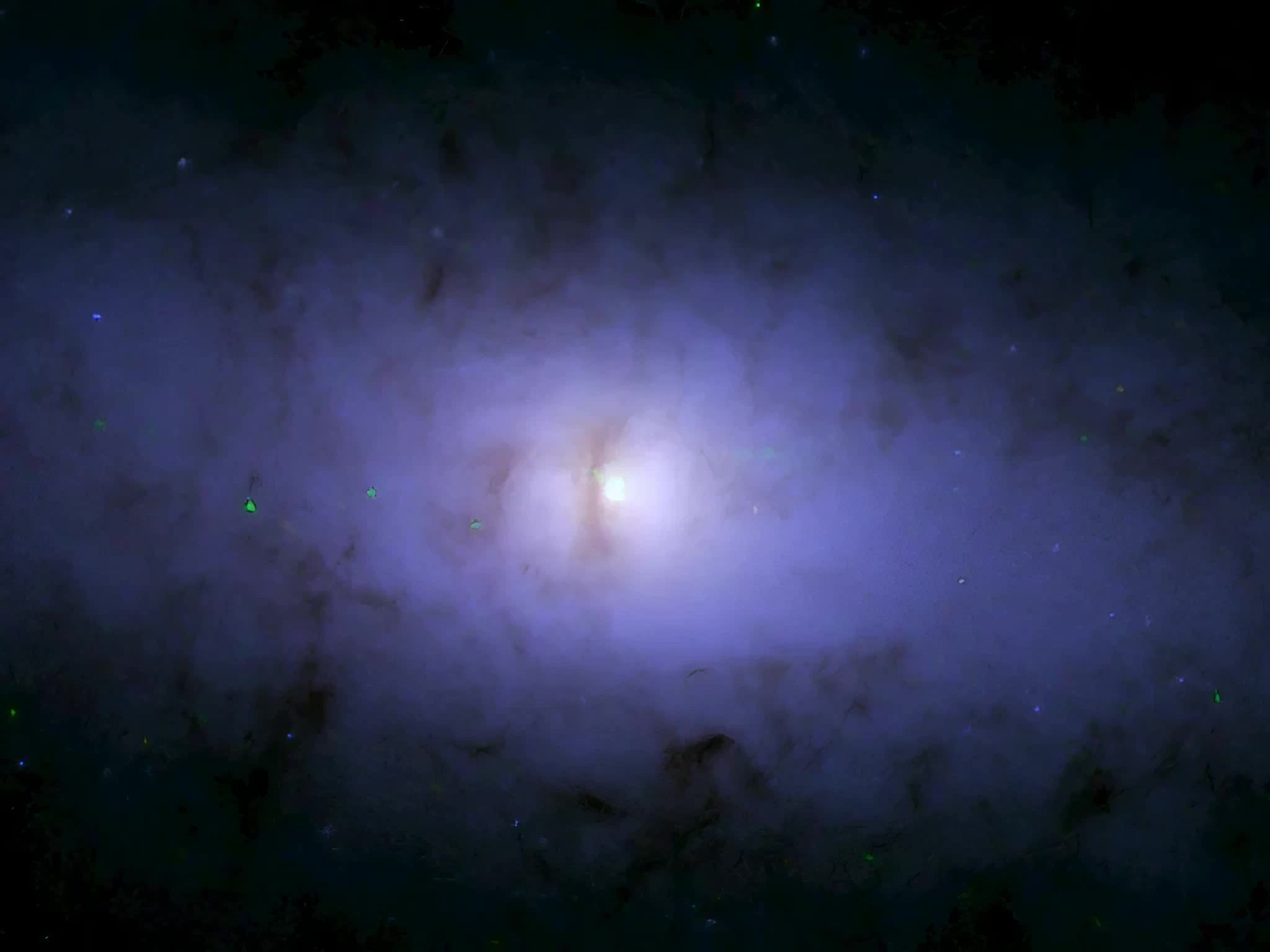By Nikki Main Science Reporter For Dailymail.Com
15:40 30 Jan 2024, updated 15:40 30 Jan 2024
A very faint, almost invisible dwarf galaxy has been found by astronomers, challenging current knowledge of the universe. This peculiar galaxy, named Nube, stands out due to its unusually high dark matter levels and low mass at its core. These unique characteristics result in sparse distribution of stars, causing the galaxy to emit very little light, making it difficult to detect over the years. Nube’s brightness is ten times fainter than other galaxies of similar size. Mireia Montes, the lead author of the study and an astrophysicist at the Institute of Astrophysics of the Canary Islands, remarked, “With our present knowledge we do not understand how a galaxy with such extreme characteristics can exist.” The galaxy was detected using data from the Sloan Digital Sky Survey. The exact location of Nube, believed to be 300 million light-years away from the Milky Way, still requires further investigation. Researchers from the Instituto de Astrofísica de Canarias (IAC) and the University of La Laguna (ULL) made the discovery. The name “Nube,” meaning cloud in Spanish, was chosen to reflect its appearance as a nearly dark galaxy with minimal mass at its center. The revelation of this dwarf galaxy is of significant importance due to its feeble luminosity, resulting from the high presence of dark matter, which has allowed it to evade detection. Dark matter, lacking light or energy, remains entirely imperceptible to conventional sensors and detectors. An inconsistency detected by researchers in the data from the Sloan Digital Sky Survey prompted further investigation. Subsequent ultra-deep multicolor imaging with the Green Bank Telescope (GBT) and the Gran Telescopio Canaria (GTC) revealed the dwarf galaxy. The puzzling question arose as to how it could remain intact with such little mass at its center. Although mass typically exerts a gravitational force to maintain the stars’ position, Nube’s existence challenges astronomers’ previous assertions that high mass is necessary for dark matter to exist. Ignacio Trujillo, an astrophysicist at the Institute of Astrophysics of the Canary Islands and a co-author of the study, proposed, “One possibility which is attractive is that the unusual properties of Nube are showing us that the particles which make up dark matter have an extremely small mass.” He also suggested that if dark matter comprises a small mass, it would demonstrate nature’s unity between the smallest and largest entities. However, this remains just one possibility, and additional research is essential, potentially altering scientists’ perception of dark matter and the universe. Dr. Mireia Montes stressed the insufficiency of the current cold dark matter model in explaining certain galaxy properties. She stated that this type of galaxy could provide vital insight into dark matter, emphasizing the imperative to question the properties of dark matter.
Montes expressed optimism in gradually refining existing knowledge to better grasp the universe.















